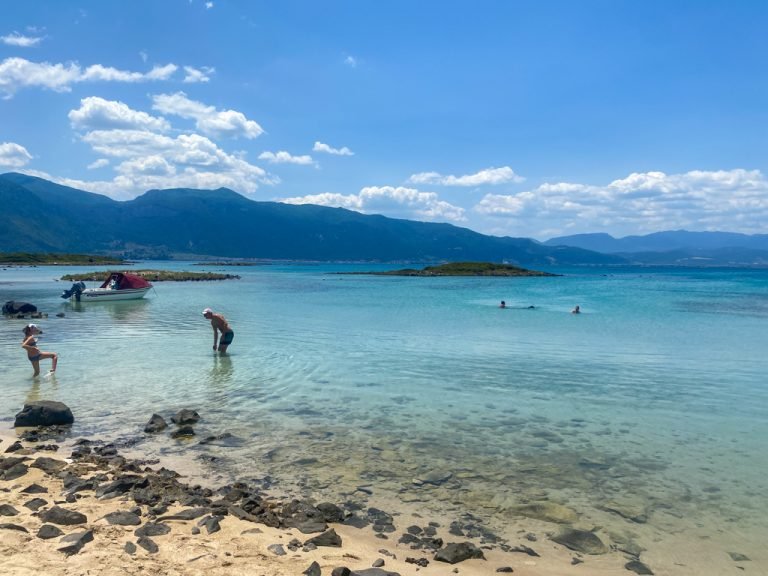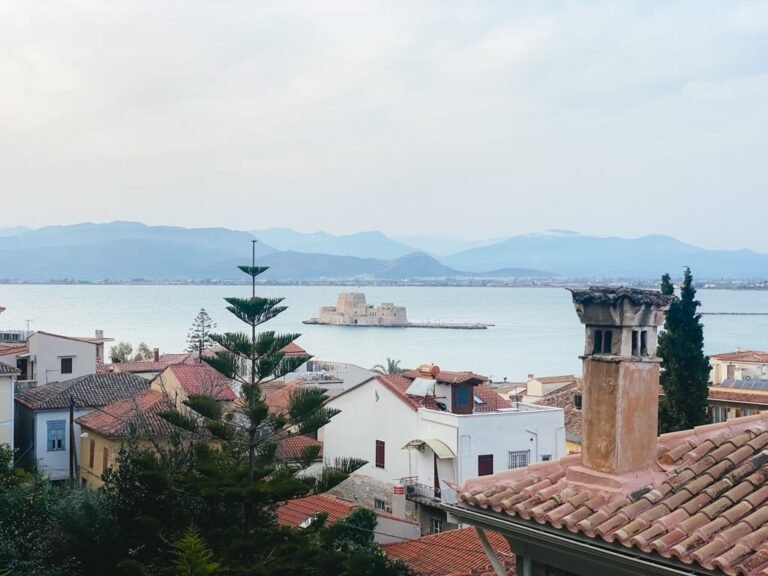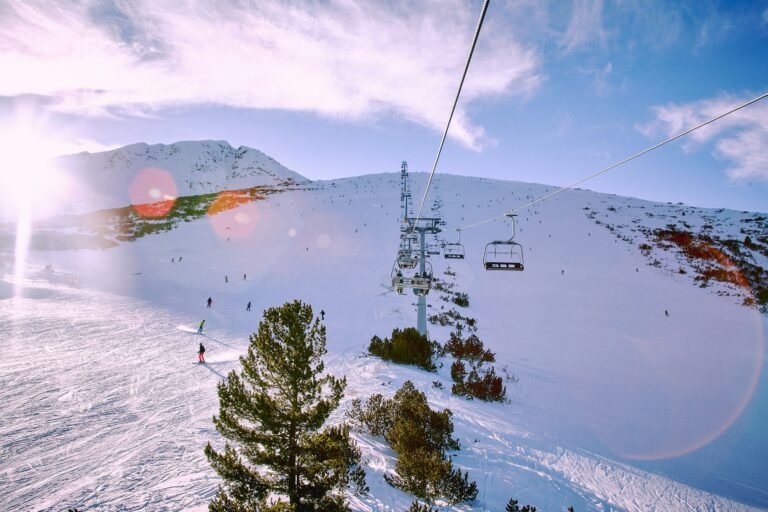This article may contain affiliate links. When you purchase something we recommend, we make a small commission. You don’t pay anything extra. 💘 For more details, check out our Terms of Use page.
Are you wondering about doing a glacier walk in Iceland?
Great!
Every country has those “once-in-a-lifetime” experiences — the kind that cost a bit more, might feel slightly touristy, but also turn out to be the thing you remember most.
You know the type: a hot air balloon in Cappadocia, a soak in the thermal spas of Budapest, or wandering through a lantern-lit temple in South Korea. You could skip them… but why would you want to?
In Iceland, that experience — for me — was the glacier walk on Vatnajökull.
It’s adventurous without being extreme, and when done right, connects you to the landscape, culture and people in a deep and meaningful way.
Here is a short roundup of my experience and what to expect as a visitor.
Table of Contents
ToggleHow Many Glaciers Are in Iceland?
Iceland is home to 269 named glaciers as of 2024 — and that number is, unfortunately, shrinking.
Vatnajökull is by far the largest — it covers about 8% of the entire country and is the biggest glacier in Europe by volume. If you’re travelling from Europe, you’ll fly above it and see the massive white mass from the plan.
But once you get to visit and hear the stories from the guides, you realize that it’s so much more than a block of ice.
It has volcanoes and caves inside, glacier formations that are thousands of years old, and it’s existance is of sheer importance.
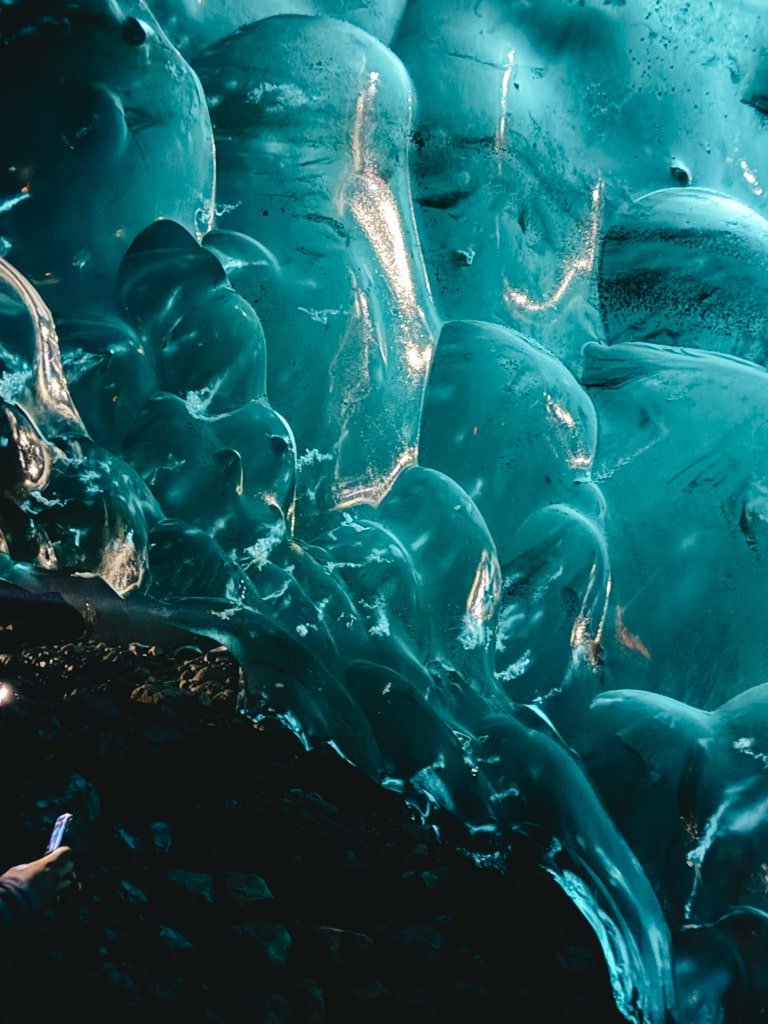
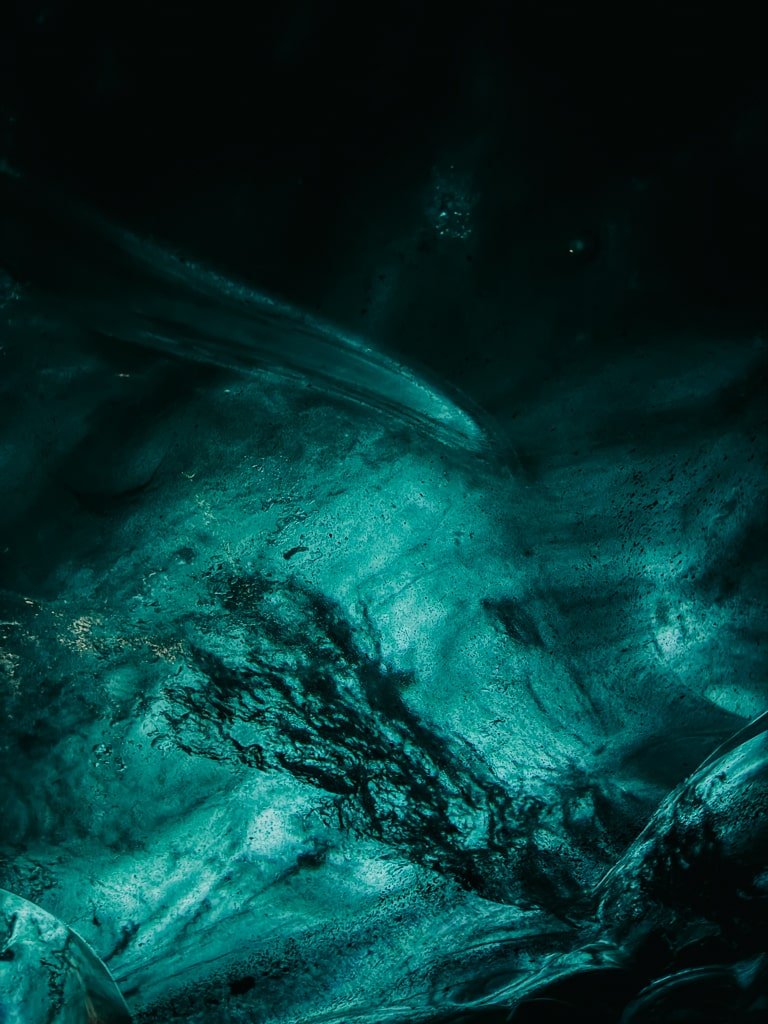
Where Can You Do a Glacier Walk in Iceland?
There are a few popular spots for glacier hiking, mostly located in South and Southeast Iceland, and all easily accessible by car if you’re doing the ring road.
Top spots include:
- Sólheimajökull Glacier – near Skógafoss, good for short day hikes
- Skaftafell (part of Vatnajökull) – the most beginner-friendly and scenic
- Falljökull or Breiðamerkurjökull – glacier tongues connected to Vatnajökull
But if you’re only doing it once — I recommend Breiðamerkurjökull, part of the Vatnajökull National Park.

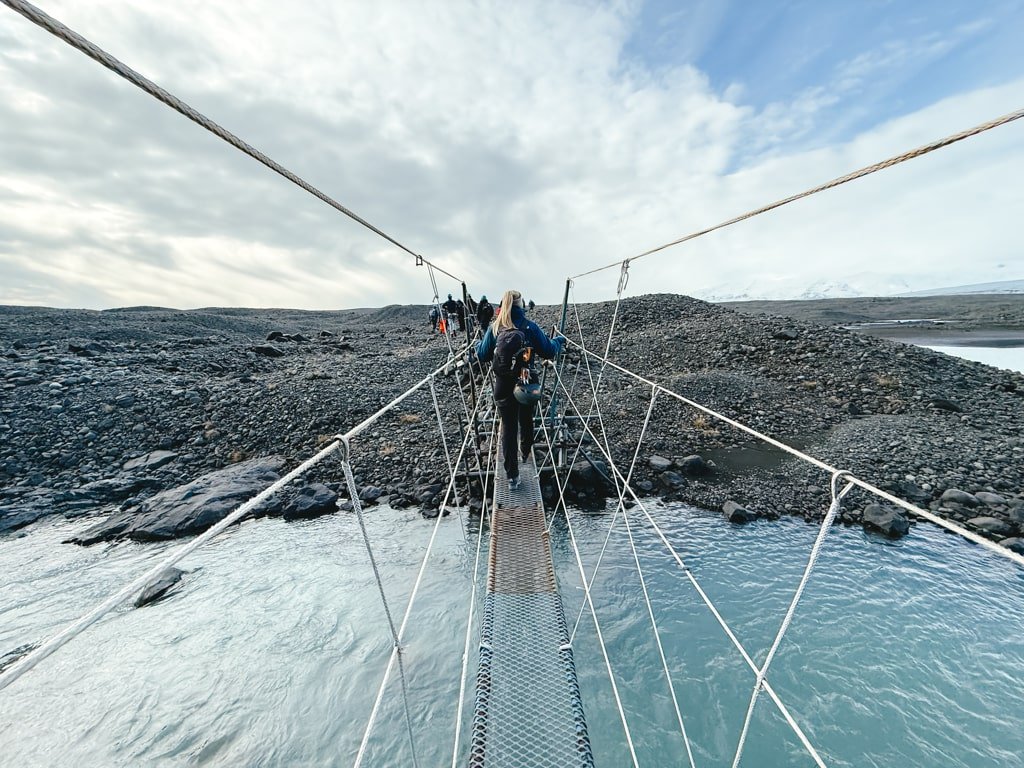
What’s the Best Season to Go Glacier Walking?
You can do glacier activities year-round, but your experience will vary slightly:
- Summer (May–September): Warmer, more stable weather, longer hikes, more exposed crevasses. Easier conditions for beginners. No ice caves.
- Winter (October–March): Colder but more dramatic — especially if you’re combining it with an ice cave tour. Trails may be shorter but views are more surreal.
Personally, I did my glacier walk in early March, and it was perfect.
Keep in mind that even though glacier and ice cave tours might not be available during the summer, there are other glacier activities to take part in, like snowmobile tours, zodiac boat tours and more.
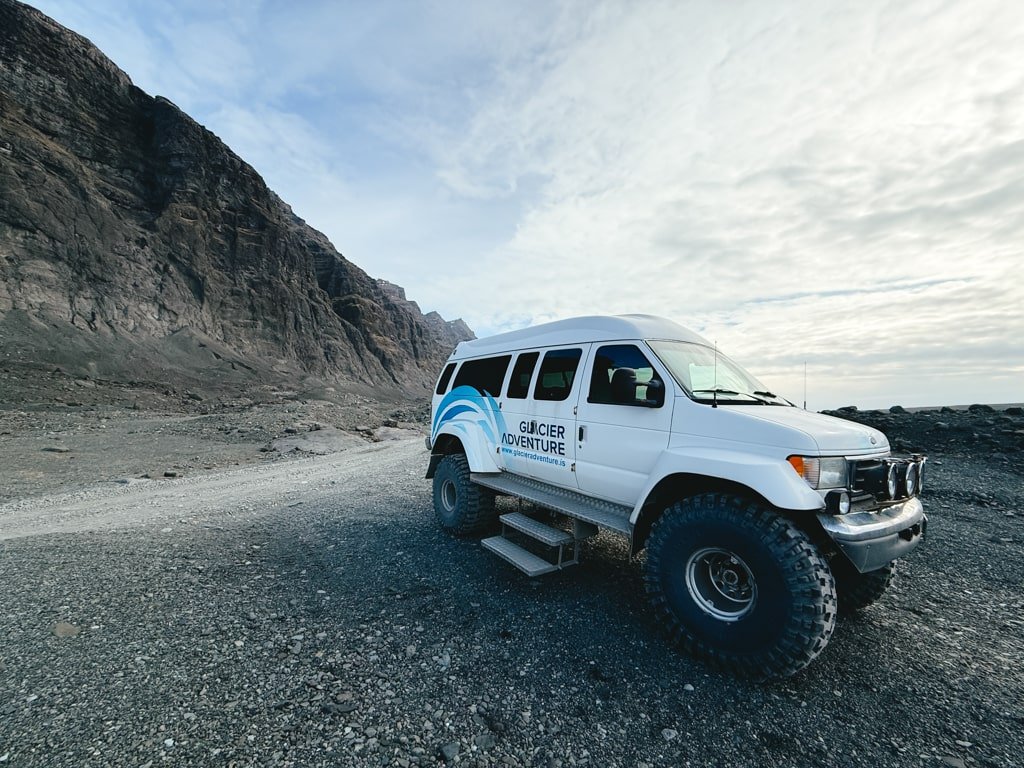
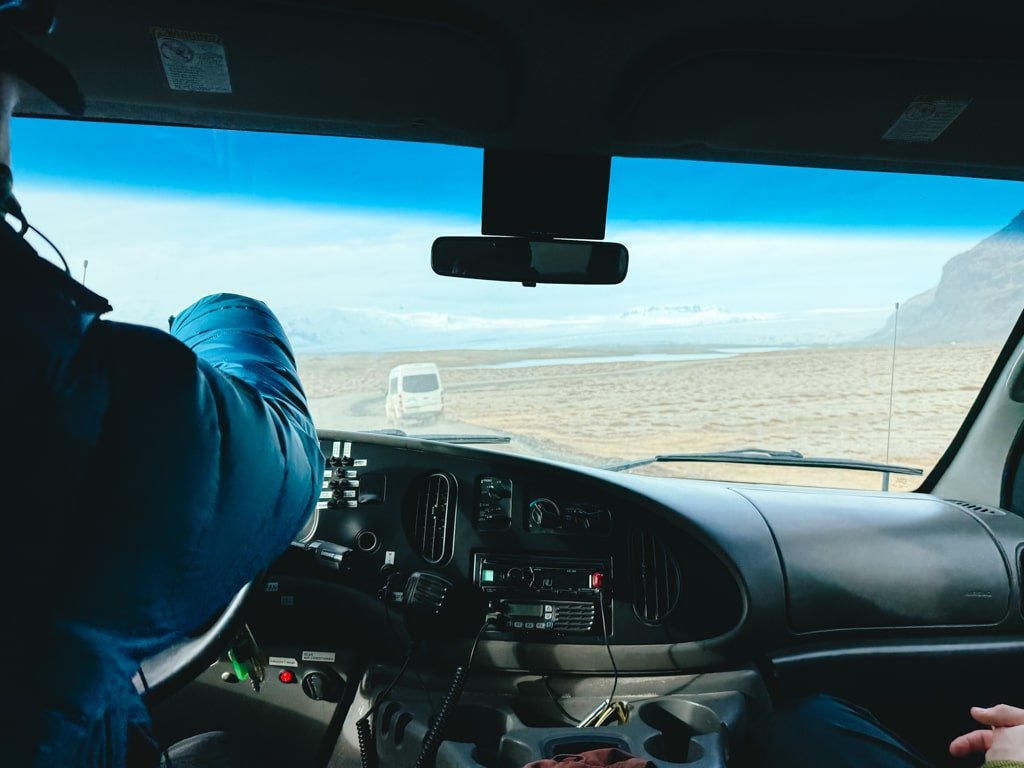
Recommended Provider: Glacier Adventure
I first visited Vatnajökull as part of my work as a tour leader with school groups, where safety, structure, and reliability always matter more than anything else. And in Iceland — where the weather and terrain demand a different level of preparation — this is more important than ever.
Glacier Adventure is one of those all-round great tourism providers, the team manages to balance everything you want in a glacier experience: deep local knowledge, genuine hospitality, a sharp eye on safety, and an atmosphere that’s relaxed but never careless. Whether we’ve had solo travelers, older participants, teens, or photographers in the group, they’ve always adjusted the pace and energy to match the people in front of them.
Valdis, one of the guides, is not just a brilliant photographer and social media manager — she’s also someone you can talk to about what it’s like to live in Iceland year-round, the rise of tourism, and how locals are adapting to the fast-changing economy. Because the company is locally run, the insight you get is personal — not rehearsed.
What also stands out is their commitment to glacier safety and preservation. Haukur (the owner) is passionate about climate awareness and the team hosts educational sessions and community events focused on education and the shrinking state of Iceland’s glaciers. You’re not just walking on the ice — you’re hearing from people who live alongside it, who care about it, and who want you to understand why it matters.
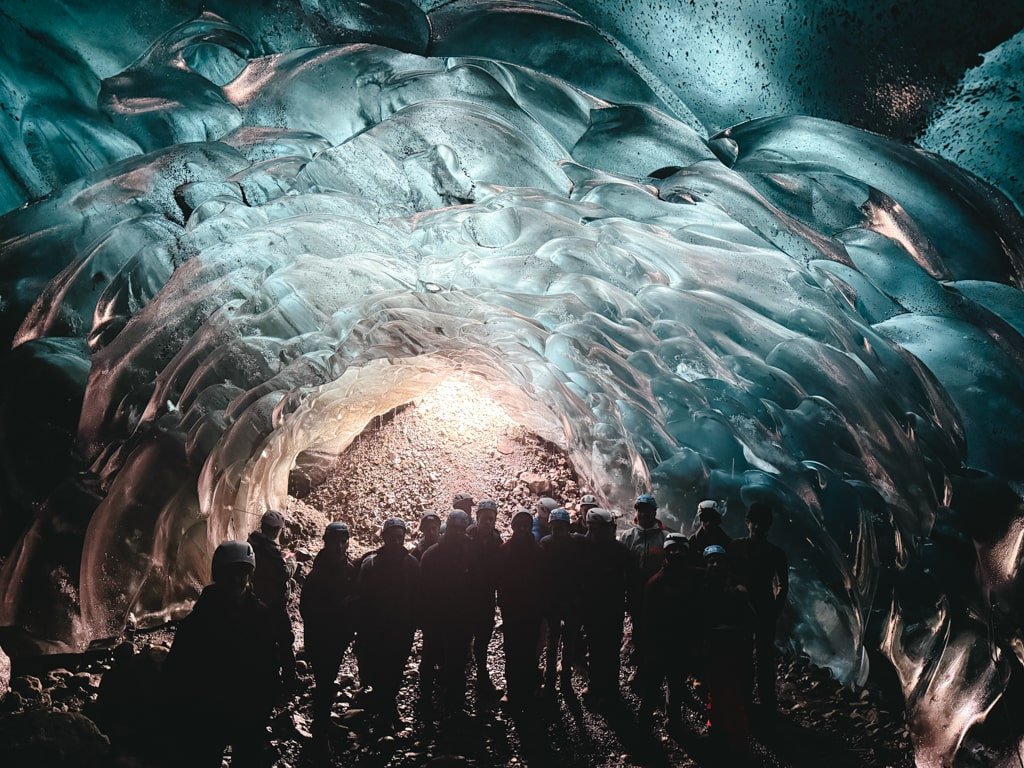
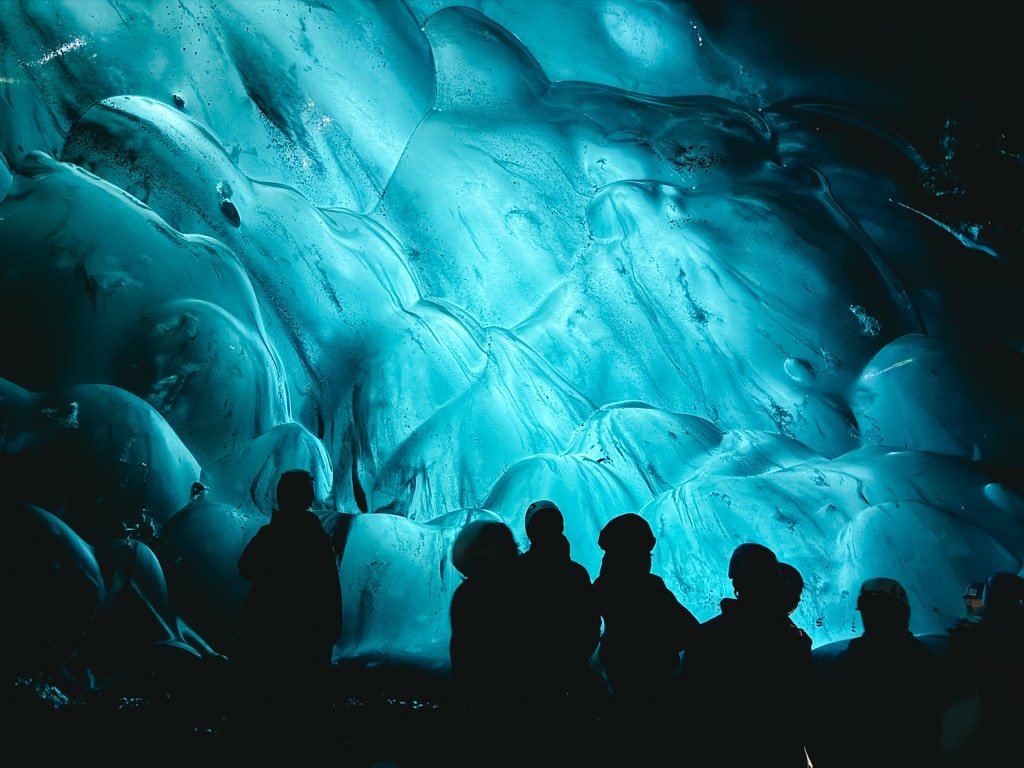
What to Expect on the Glacier Walk
For the actual experience, expect to arrive at least a bit in advance to get the paperwork and gear ready. You’ll be fitted for crampons and uniforms, as well as a harness and helmet. It’s all very stylish and much needed.
For young kids, the Super Jeep ride alone could either be scary or the most exciting part — they look like mini spaceships traveling on bumpy roads with their huge wheels.
The walk to the glacier is usually less than 15 minutes, at which point you put on the crampons and start walking on the ice. This part is always fun with a big group, as someone will inevitably have an issue with their crampons. But oh well — as newbies who don’t get to do this every day, we all have to learn.
Without a doubt, the highlight of the walk is the ice caves.
On my recent visit, we got to visit two ice caves, the first was in its final days (filled with debris and collapsing ice formations) which meant crawling low and carefully moving. It was quite a workout for the legs at some stage.
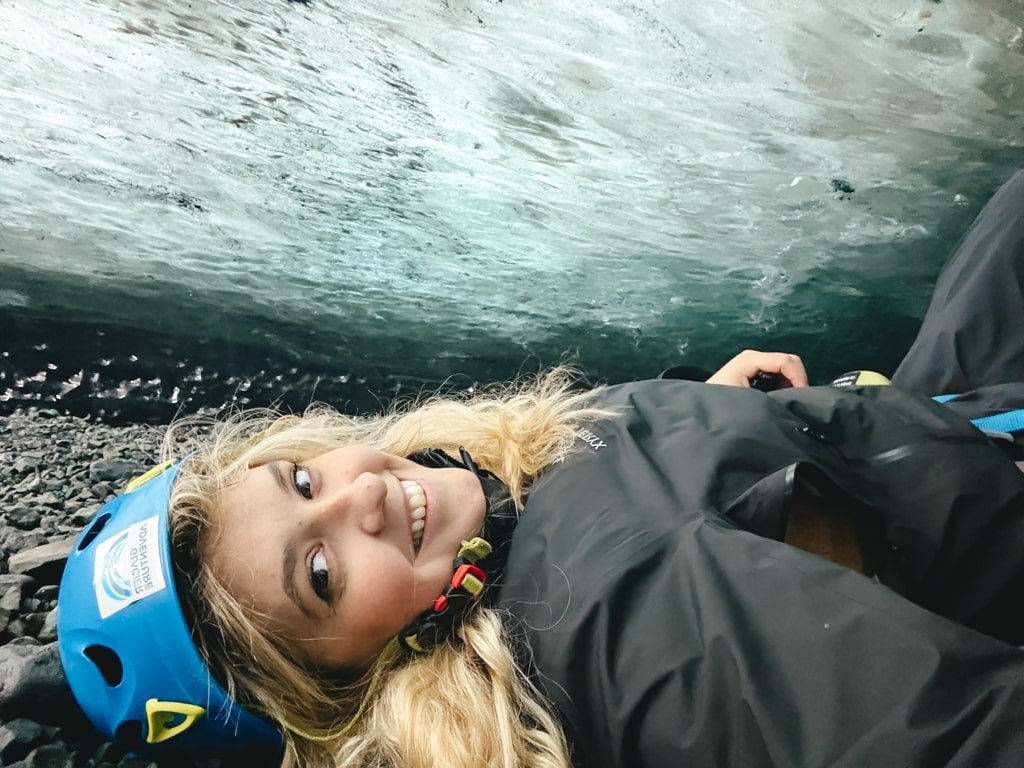
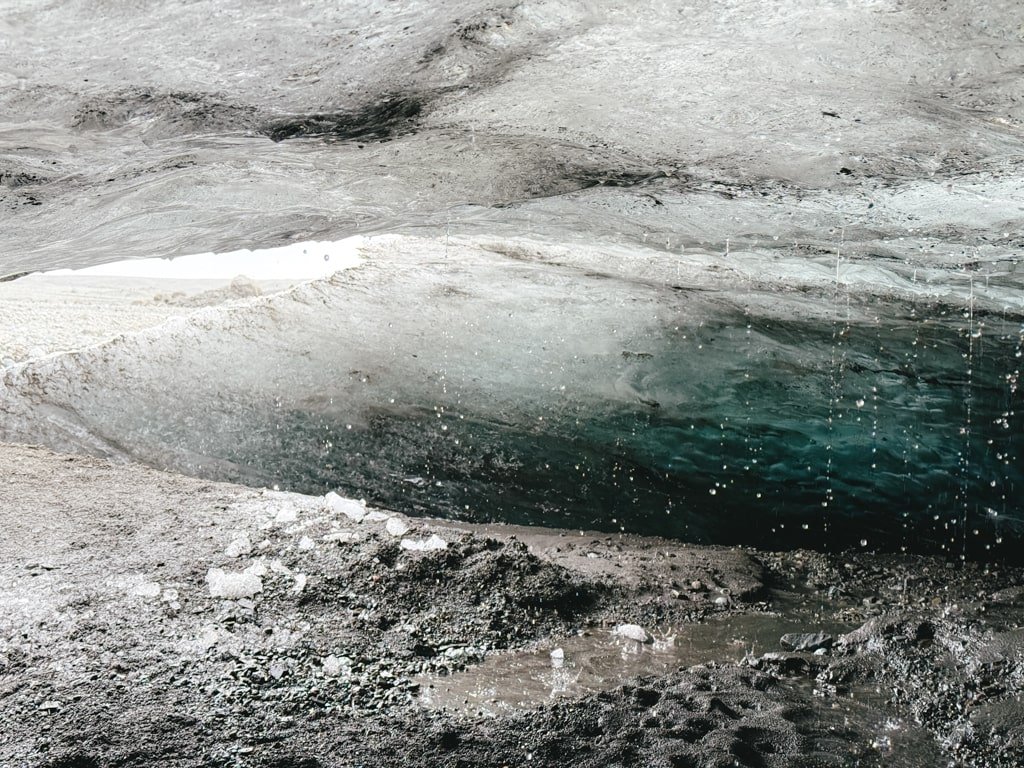
The second was a brand-new cave discovered just the season before, and it was magical. The light, the color, the stillness — it’s hard to describe and even harder to photograph in a way that does it justice. That moment alone made the whole day unforgettable.
What struck me more than anything was how much the glacier has changed. You can literally see how far it’s retreated, how dirty the ice is getting, and how much effort is required just to access it safely. It’s a wake-up call — a reminder that this landscape is disappearing faster than most people realize.
It’s also a point I want to bring up about people that are disappointed the experience should be more “photogenic”. While it is definitely a cool experience, the fact that it is grey or muddy or retreating should more of a wake up call rather than a complaint of the tourism providers.
Overall, expect this day to spark conversations — whether with your kids, your friends, or even yourself — about how we relate to nature and what we’re doing to protect it.
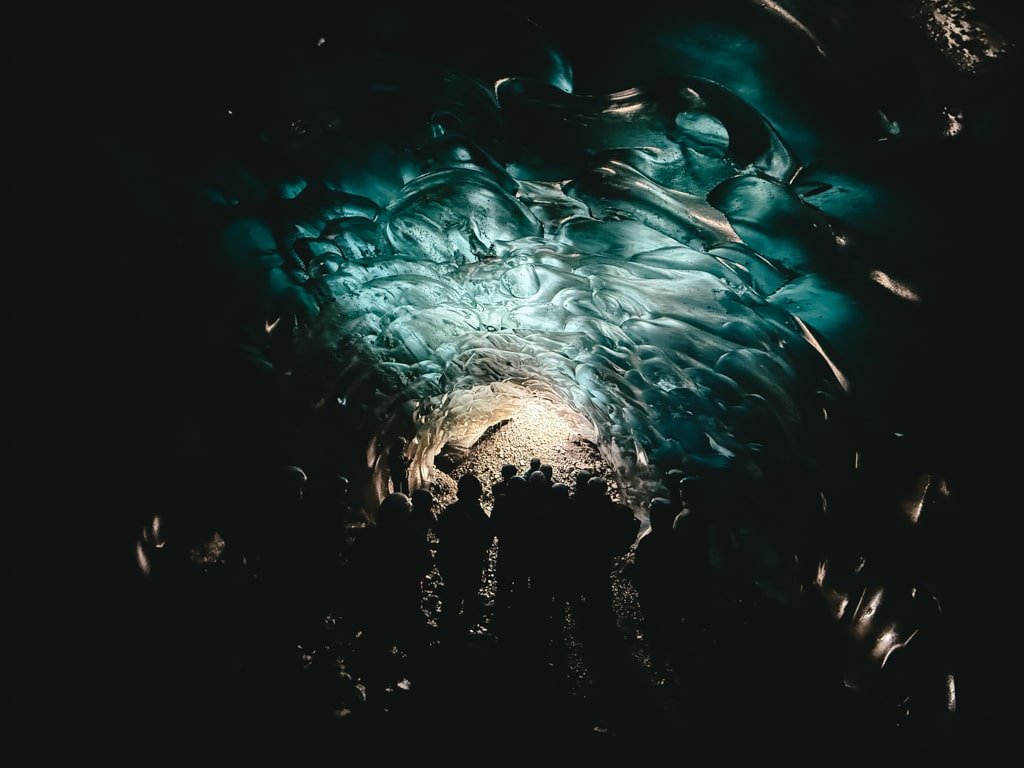


What to Bring for Your Glacier Walk
You don’t need to overpack for this — the tour company provides all the technical gear (crampons, helmets, harnesses). But there are a few essentials that will make your day way more comfortable:
- Waterproof jacket and pants – Especially important if you’re visiting ice caves or crawling through tight spaces.
- Thermal base layers – It’s cold on the glacier, even if the sun’s out.
- Gloves and a warm hat – The kind that cover your ears and still let you grip things.
- Sturdy hiking boots – With good ankle support. If you don’t have any, check if your tour company offers rentals. Glacier Adventures does offer them on request.
- Sunglasses – Glacier glare is real, even on cloudy days.
- Water bottle + small snack – It’s a few hours of walking and the cold burns energy fast.
- Camera or phone – Make sure it’s secured (wrist strap or zipped pocket). You will want photos.
- Small backpack – Nothing fancy, just something to hold your layers, water, and phone safely.
Optional but handy:
- Neck warmer or buff – Wind protection for your face
- Hand warmers – Especially if you’re sensitive to cold
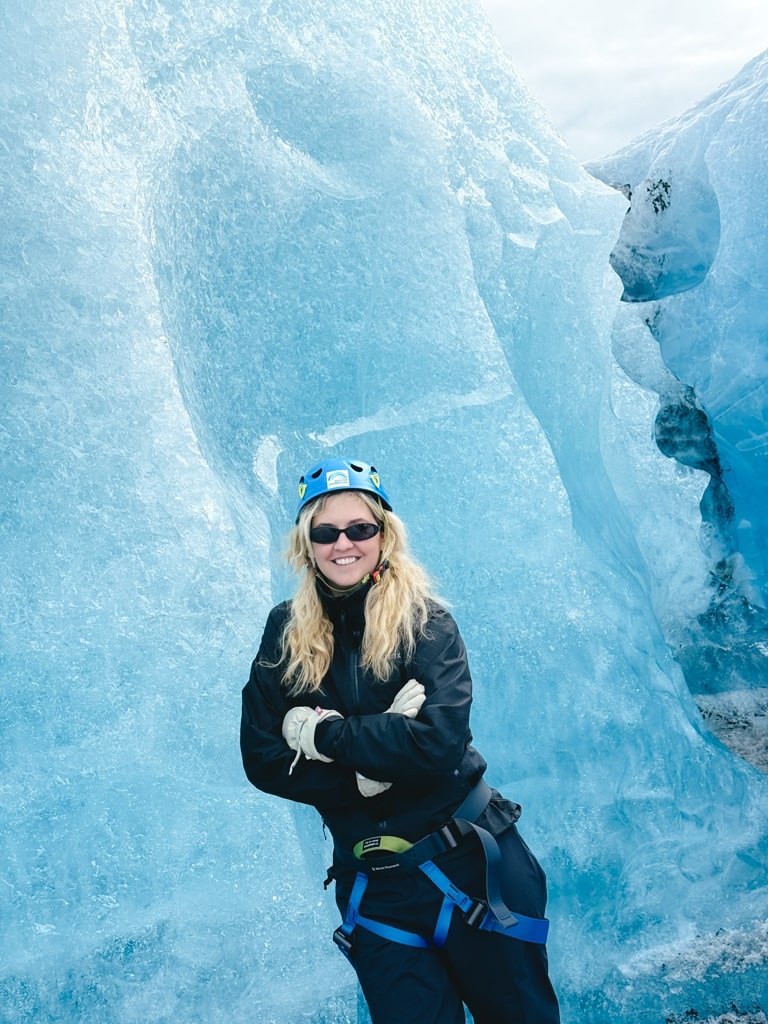
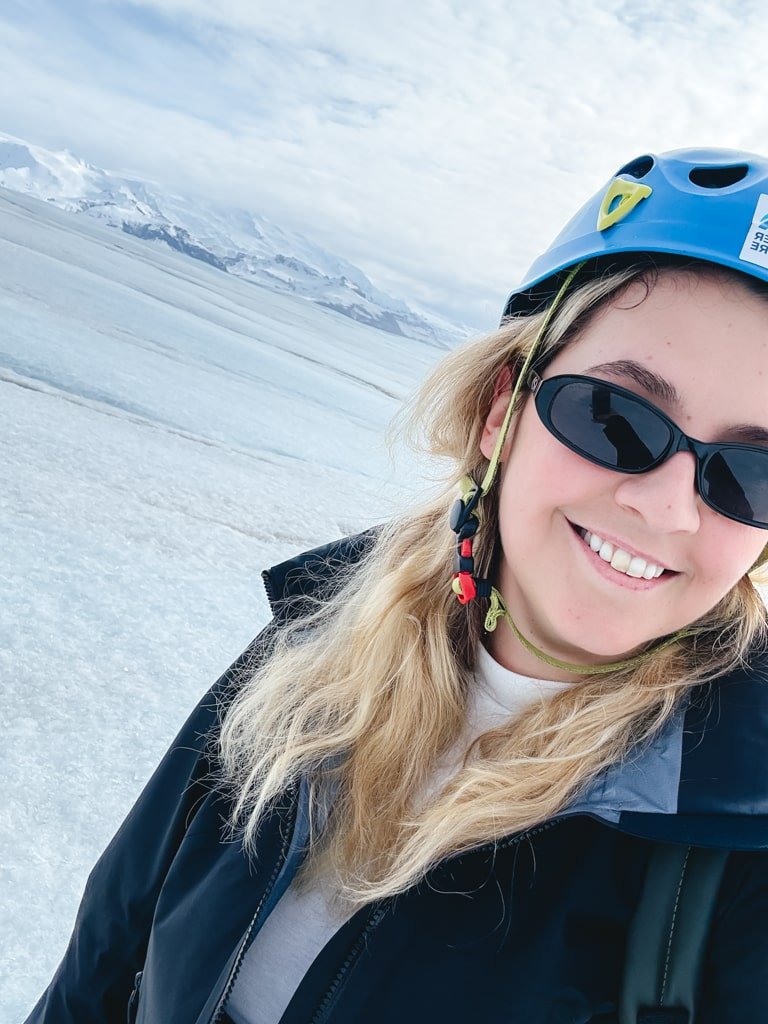

How to Book Your Glacier Walk
You can book directly through Glacier Adventure’s website. Most of their tours depart from Hali or the surrounding area, which is about a 15-minute drive from Jökulsárlón Glacier Lagoon.
Tours tend to fill up quickly in high season (especially if you want the ice cave combo), so I’d recommend booking at least 1–2 weeks in advance — more if you’re visiting during school holidays or winter.
Pricing: Expect to pay between €140–€180 per person, depending on the season and tour type. That usually includes all the technical gear, a guide, and transportation from the meeting point to the glacier base.
You can also book through third party agents like Trip Advisor or Viator.
Book the experience here.
What to Do Nearby
If you’re already making your way to Vatnajökull, you’re likely passing some of Iceland’s most incredible southern sights. A few things to pair with your glacier walk:
- Jökulsárlón Glacier Lagoon – Watch icebergs drift to sea
- Diamond Beach – Just across from the lagoon
- Höfn – For fresh langoustine if staying eastbound
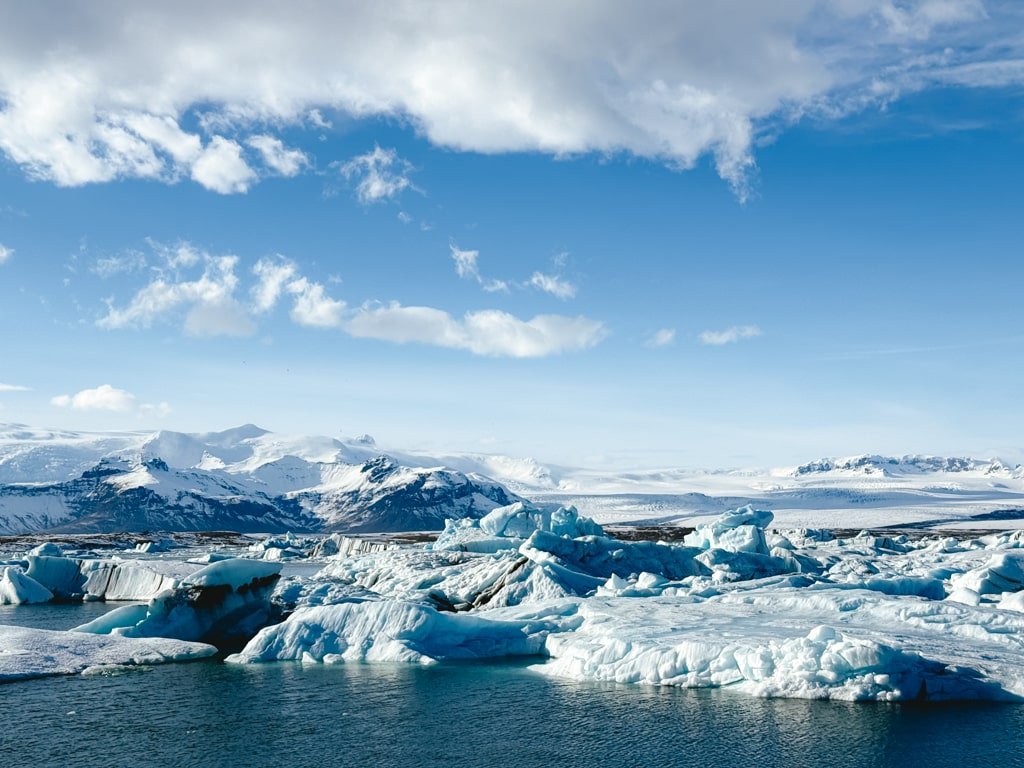
ESSENTIAL INFORMATION
Must Know When Visiting Iceland
- Emergency: Dial 112 for police, fire, or ambulance — it’s a unified emergency service.
- Language: Icelandic is the official language, but English is widely spoken, especially in Reykjavík and tourist-friendly areas. Still, it’s nice to know “Takk” (Thank you) and “Hæ” (Hi).
- Water: Tap water is 100% safe and delicious skip bottled water entirely.
- Driving: Drive on the right-hand side. Renting a car? A 4×4 is recommended in winter. Check road.is and safetravel.is before heading out.
- Accommodation: Use Booking.com or Airbnb for the widest range. Hostels, farm stays, and guesthouses are also popular. Always book early, especially in summer.
- Weather: Icelandic weather changes fast always check forecasts at vedur.is or download the Vedur app. Wind and rain can pick up without warning. Check out the packing guide for more info.
- Activities: From cultural sights to day trips, food tours and city guides, use Get Your Guide.
Public Transport: Limited outside Reykjavík. Use Straeto buses in Reykjavík, or plan ahead for long-distance routes — but self-drive or guided tours are far more practical.
- Domestic Airlines: For islands like the Westman Islands, ferries can be booked via Herjólfur. For longer distances, look at Icelandair or Eagle Air for domestic flights.
- Taxi: Taxis are expensive and not always available. Use them only if needed or ask your hotel to call one. No Uber or rideshare services exist.
- Money: Credit and debit cards are accepted everywhere, including for tiny purchases. No need for cash in most cases.
Culture: Icelanders are friendly but value personal space. Tipping isn’t expected. Pools have strict hygiene rules (you must shower naked before entering), and hot springs are seen as a shared cultural experience not just a tourist activity.


